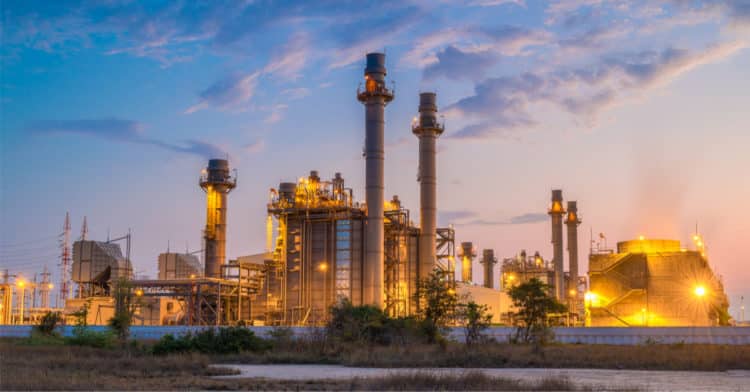Europe’s problem isn’t just dependence on Russian oil and gas. It’s dependence on fossil fuels, period.

The invasion of Ukraine has exposed the European Union’s dependence on Russian oil and gas. Its imports are directly funding Vladimir Putin’s war efforts, to the tune of €20 billion in March alone.
The EU’s response—driven by a mix of concerns over energy insecurity, price rises and domestic political instability, as well as the need to defang the Russian war machine—has been to double-down on gas from other sources and promote alternatives proffered by the fossil-fuel industries. Yet the latest report from the Intergovernmental Panel on Climate Change says we need to slash fossil-fuel use: it is ‘now or never’ to stave off climate disaster.
So how did the EU come to depend not just on Russian gas, but all fossil gas? It is a consequence of how the fossil-fuel industry successfully captured EU decision-making. This was evident in 2014, when Russia occupied Crimea, and it continues today with the powerful gas lobby shaping Europe’s response to the Ukraine crisis.
Due to this ‘gastastrophe’ of corporate capture, the EU will continue to fuel conflict (if not in Ukraine then in Yemen and elsewhere), continue to fuel climate chaos and continue to fail the millions who are facing a growing cost-of-living crisis.
Focused minds
Russia’s annexation of Crimea in 2014 focused EU minds on reducing reliance on its gas. But rather than ramping up wind, wave and solar energy, or energy efficiency—measures which would tackle climate change, fuel poverty and gas dependency—the EU focused on gas from other, equally dubious, sources. Political and financial backing was given to pipelines from Azerbaijan—which has an appalling human-rights performance and is in chronic conflict with neighbouring Armenia—and liquefied-natural-gas (LNG) terminals, which could ship in gas from the United States generated by fracking.
This is the direct result of the co-dependent relationship between the European Commission and the gas lobby. The very companies which build and operate gas pipelines and LNG terminals—such as Italy’s Snam, France’s GRTgaz, Belgium’s Fluxys, Spain’s Enagás and the United Kingdom’s National Grid—were incorporated into EU policy-making via their membership of the European Network of Transmission System Operators for Gas (ENTSO-G), a group created by EU legislation.
The role of ENTSO-G is to predict future gas use and propose infrastructure projects to meet it—which its members then build. There could not be a more obvious conflict of interest. Unsurprisingly, the group has consistently overestimated future gas demand; as a result, between 2013 and 2020 the EU spent €4.5 billion on 44 new gas infrastructure projects, with 90 per cent of the money going to ENTSO-G members.
Remained dependent
Thus, despite the urgency of the climate crisis, the EU has remained dependent on a fossil gas whose carbon footprint can be as bad as coal. Thanks to falling domestic production and increased LNG import capacity, Russia filled the gap by piping and shipping its gas. By 2021 Russian imports had reached 40 per cent of total EU gas consumption, an increase of almost half compared with 2013.
This not only made a mockery of climate goals. By failing to move away from gas, the EU rendered itself far more vulnerable to changes in global gas prices, particularly LNG spot prices, which caused energy prices to soar in autumn 2021—even before the invasion of Ukraine.
The EU is once again trying to reduce its dependence on Russian gas: its RePowerEU communication issued in March aims to reduce demand by two-thirds by the end of 2022 and to stop all fossil-fuel imports—coal and oil included—by 2027. But the proposed solutions have the fingerprints of the gas lobby all over them.
Under RePowerEU, which will be fully fleshed out by mid-May, oil and gas will be sought from sources beyond Russia. These include other repressive regimes, such as (again) Azerbaijan and Qatar, where thousands of migrant workers have died since the country was awarded this year’s football world cup. Another candidate would be Saudi Arabia: the Saudis executed 81 people just days before the UK prime minister, Boris Johnson, visited Riyadh to urge an increase in production.
The drive for diversification is accompanied by a massive push for new gas infrastructure, from the industry and from the commission. We are facing half-a-dozen new LNG terminals in Germany and the revival of MidCat, a shelved pipeline from Portugal to Spain and then France. Yet new research shows increased support for rooftop solar and energy efficiency could reduce Russian gas imports by two-thirds in the next three years, with existing infrastructure easily covering the remainder.
Techno-fixes
RePowerEU also sets huge targets for gas-lobby techno-fixes, such as hydrogen and biomethane, which are a climate disaster but highly profitable for the industry. The communication talks about an extra 15 billion tonnes of ‘green’ hydrogen from renewable electricity by 2030, both domestic and imported, which is more than double the EU’s current target.
But where will the renewable electricity come from when the EU is already missing its renewable-energy targets? Today 97 per cent of Europe’s hydrogen is made from fossil gas and Shell, Equinor and other gas producers are confident fossil hydrogen will remain a permanent fixture. They openly admit there will not be enough renewable electricity to produce the quantities of hydrogen mooted but are using the appeal of green hydrogen, and the broader push for an EU-wide hydrogen market, as a Trojan horse for their own fossil hydrogen. Yet the commission is pushing forward regardless, having crafted its response to the Ukraine invasion hand in hand with the gas lobby.
Meanwhile 2030 targets for biomethane have also been doubled. The commission and the industry claim it will come from agricultural or municipal waste, but high-quality biomethane is easier and cheaper to produce from crops, likely competing with food, as we saw in the 2000s when high biofuel targets saw spikes in food prices and widespread hunger. Given that the pandemic and war are hitting food prices, not just fuel costs, this solution is deeply short-sighted.
Seriously weakened
While the communication covers energy efficiency, compared with previous drafts this has been seriously weakened. According to sources close to the process, neither the commission nor member-state governments are relying on energy efficiency to reduce dependency on gas as that would be ‘not concrete enough’ compared with new sources.
Shifting from cheap Russian gas to expensive and volatile LNG while building expensive new infrastructure is only going to exacerbate the cost-of-living crisis, yet the social impact of the plan is not discussed. The opportunity to tackle it via energy efficiency—such as a mass insulation programme which could have trained up and employed thousands while lowering household bills—has been passed over. That is also a missed opportunity for useful climate action.
Even the positive proposal of a windfall tax on Big Energy, supported by some national governments, has been limited by fears it could ‘de-incentivise’ energy companies from investing in renewable energy. It could not be clearer how the EU is putting the interests of the gas industry before the increasing numbers of energy poor, and climate action, because of the longstanding and incestuous relationship between the gas industry and decision-makers.
Brazen examples
The RePowerEU communication is itself evidence of the corporate capture of EU policy making by the industry, but since the invasion there have been more brazen examples. The commission president, Ursula von der Leyen, openly tweeted about a meeting on reducing gas demand with the European Roundtable of Industrialists, a lobby group at chief-executive level whose members include TotalEnergies, BP and E.On. As a result of that meeting, she announced she was going to ‘[s]et a group of industry experts to help reduce our dependency [on Russian gas]’.
At the national level, the chief executive of the Italian oil and gas major Eni has been on a world tour, alongside the country’s foreign minister, Luigi Di Maio, to secure new gas supplies from such countries as Algeria, Azerbaijan and Angola. Similarly, the German Greens’ new climate and economics minister, Robert Habeck, has been in Qatar signing a deal for LNG.
Corporate capture means EU energy policy is being crafted with and for the gas industry, threatening decades of continued fossil fuel lock-in. If we want to end our reliance on gas—Russian or otherwise—we need to end the relationship between the industry and decision-makers, cutting fossil-fuel interests out of our political system.
In short, we need fossil-free politics.
